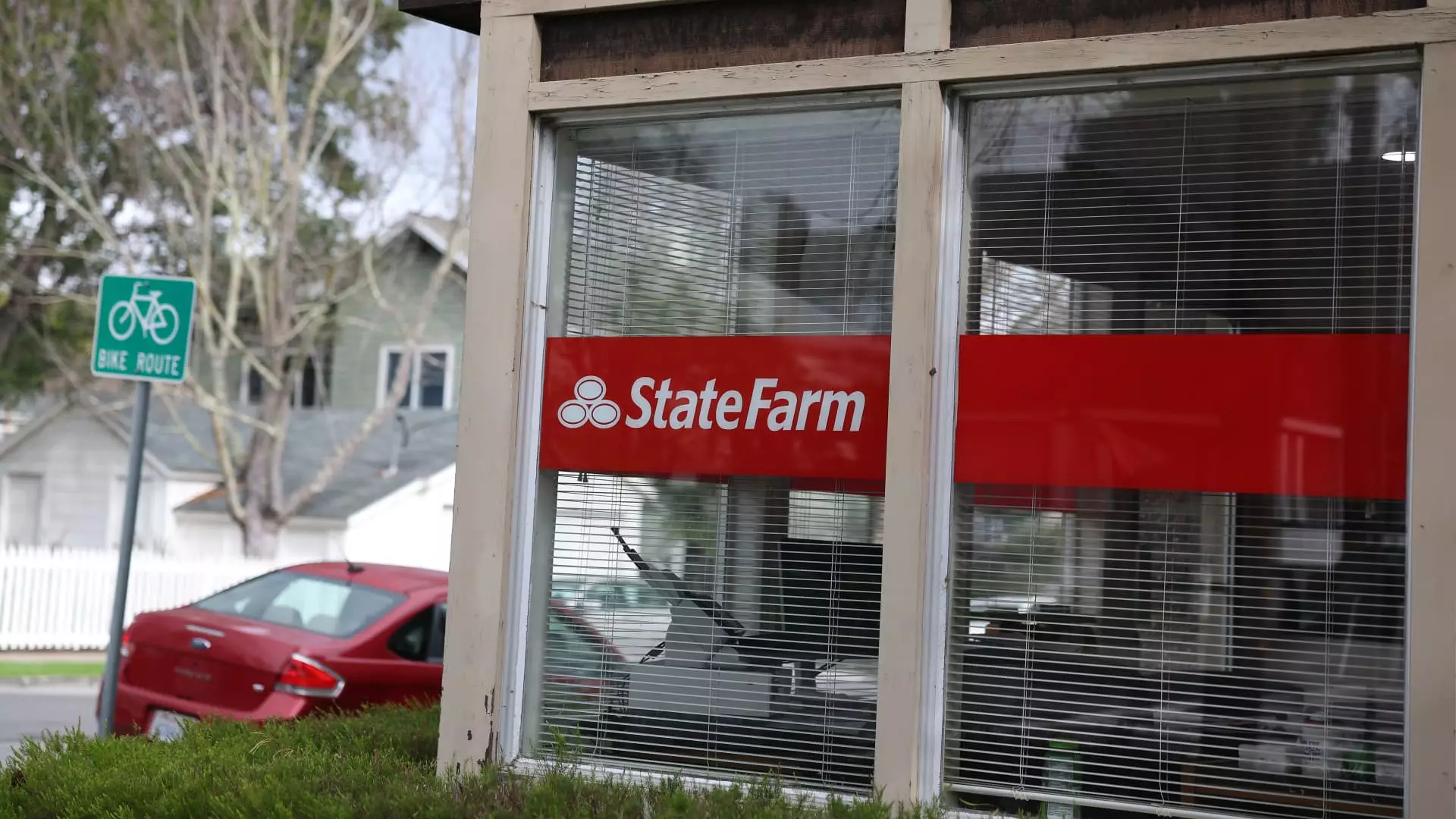State Farm’s attempt to hike homeowners’ insurance rates by 17% in California is a troubling indicator of a systemic crisis within the insurance industry. As the state grapples with a rising tide of natural disasters, this request transcends mere business adjustments; it embodies an existential threat to stability for nearly 3 million policyholders. With catastrophic wildfires wreaking havoc in Los Angeles and wreaking an estimated $250 billion in damages, the spotlight now shines on how the state’s largest property insurer—holding a significant share of California’s insurance market—plans to navigate these turbulent waters.
At the core of this issue is the pressing financial reality confronting insurers like State Farm. The company’s plea for an emergency rate increase follows years of inadequate underwriting performance and escalating claims costs. To put it bluntly, State Farm is not merely asking for more money; it’s signaling a breakdown in the very fabric of risk management in a state rife with uncertainty. It’s as if they are reaching for a life preserver while the ship is already taking on water, with warnings of thousands of policyholders potentially left high and dry.
The Titanic Prognosis: A State of Emergency
During a recent administrative hearing in Oakland, an attorney from the California Department of Insurance starkly likened State Farm’s situation to that of the Titanic sailing towards an iceberg. The metaphor is cryptic yet apt; the iceberg is not simply its current financial malaise but the broader trends in climate, which have resulted in increasingly frequent and devastating natural disasters. Witnessing the slow unraveling of dependable insurance as a safety net is deeply concerning for many Californian families who see homeownership as a fundamental element of financial stability.
The ongoing threat of environmental catastrophe has prompted even major players like State Farm to cease writing new homeowners policies altogether. The alarming trend underscores the urgent need for policies that protect not just the corporations but the very citizens who rely on these financial instruments for peace of mind. State regulators must exhibit fortitude in grappling with these pressing challenges.
The Disconnect Between Insurers and Residents
State Farm’s request for rate increases has sparked fierce debates among policyholders and advocates alike. While the California Department of Insurance appears supportive, the advocacy group Consumer Watchdog has emerged as a vociferous opponent, arguing that the insurer has failed to demonstrate the necessity of these hikes. It’s troubling that an organization representing the interests of consumers must challenge an insurer’s fundamental need to justify its financial demands. What does this say about trust and transparency in the insurance landscape?
State Farm’s shifting narrative—from a 22% requested increase to a more palatable 17%—raises red flags. Is it ethical for such corporations to approach rate changes with such apparent volatility? The optics are unflattering, as they suggest entrenched instability and lack of a coherent strategy. This poses the question: If State Farm is not prepared to offer a solid justification for rate increases, how long before these financial practices spiral into a broader crisis, effectively leaving homeowners with inadequate coverage?
Incremental Solutions and a Path Forward
The emergence of the FAIR plan, California’s safety net insurance program, to assist homeowners cast aside by their main insurers speaks to the dire situation. While this program is a necessary response, it raises questions about sustainability and long-term viability. A disturbing trend is evident; many homeowners who once relied on traditional insurers now find themselves fleeing to what is often a less comprehensive form of coverage. The risks associated with this shift are significant—not only do these families face uncertain coverage, but they also risk being trapped in a cycle of vulnerability.
As both State Farm and regulators grapple with these challenges, there appears to be a pressing need for a comprehensive “Sustainable Insurance Strategy” that can adapt to the current climate crisis. Utilizing advanced catastrophe modeling to better predict risks and streamline rate approvals is a step in the right direction. Yet, the implementation must prioritize consumer protection instead of purely financial interests.
The path ahead requires bold leadership, both from insurance companies and from regulators. It’s vital that these entities foster a marketplace built on transparency, equity, and responsibility, creating a scenario where both insurers and homeowners can prosper together. Ultimately, California’s climate will continue to challenge our collective resilience, and how we respond to this critical juncture will define the future of its communities.

